SCHOOL OF VISUAL ARTS
DIVISION OF CONTINUING EDUCATION

Issue No. 3


SCHOOL OF VISUAL ARTS
DIVISION OF CONTINUING EDUCATION


Our dynamic course offerings span a multitude of disciplines, including advertising and design, animation, film, fine arts, illustration and comics, interior design, photography and video, professional development, visual and critical studies, and visual narrative. With a robust online and on-campus curriculum, our program’s global reach connects students from around the world to industry leading faculty in New York City. For more information about the Division of Continuing Education and our course offerings, please visit sva.edu/ce.
SCHOOL OF VISUAL ARTS DIVISION OF CONTINUING EDUCATION
VOLUME CII • NUMBER 4
ContinuEd (USPS-004171), © 2025 by the Visual Arts Press, Ltd., is published quarterly by the School of Visual Arts, 209 East 23rd Street, New York, NY 10010. Call 212.592.2050 to subscribe. Periodicals postage is paid at New York, NY.
POSTMASTER: Send address changes to Division of Continuing Education, 209 East 23rd Street, New York, NY 10010-3994.


the Division of Continuing Education at the School of Visual Arts (SVACE) has become recognized as the preeminent continuing education arts program in New York City for aspiring illustrators, fine artists, and comic artists. The success of our program is attributed to our dedication to developing a curriculum that not only preserves traditional craftsmanship but also includes evolving technologies that have become the new tools of makers and draftsmen alike. Whether you are a hobbyist, a practicing artist, a professional looking to build a career in illustration, or an emerging creator designing your first comic, our courses can provide you with the framework to explore all your creative goals.
SVACE is designed to meet the needs of working creative professionals in the 21st century. Our program maintains that having a strong drawing background, and developing the baseline skills to build images from concepts as an illustrator, are still paramount. The working illustrator needs to learn how to use those skills to meet the needs of the publishing and editorial marketplaces. The images you see in advertising, on billboards, posters, book jackets, and magazines are created by illustrators. If you’re interested in becoming an illustrator, then you’ll find it useful to improve your basic drawing and painting skills while simultaneously studying illustration techniques, portfolio development, typography, and visual storytelling. Doing so can help open the door to the industry. Building a strong portfolio as an illustrator goes beyond just fabulous drawings; it must also encompass a singular style and direction. With the help of our faculty whose achievements rank at the top of their fields, you will have guidance from working professionals and educators with invaluable knowledge in the world of illustration.
What makes continuing education at SVA so unique is the opportunity to connect with our community, which includes people from the vibrant scene of creatives living and practicing in New York City. Working as a fine artist, either professionally or personally, can mean long hours of developing an idea or an art piece in isolation.
Continuing your education with us means bridging the gap between the artist’s studio and the classroom, where you will have the opportunity to learn and grow with peers from diverse disciplines. Our fine arts curriculum spans traditional mediums such as ceramics, painting, sculpture, fiber arts, drawing, and printmaking, and it includes new media practices designed for exploration and opening different ways of thinking. If you are looking to learn the basic skills, study a new medium, or be immersed in a collective studio environment, our facilities can provide you with the time and space you need for your artistic practice.
The continuing education classroom acts as an incubator for new ideas; here, group critique is essential to working through a concept. Learning the art of comics goes beyond drawing and delves into the realm of storytelling. Comic artists employ their imaginations to meld drawing and text together to take the reader through a carefully crafted journey. Creating comics can entail world-building, developing and styling characters, establishing lore, and sometimes even inventing languages. Studying with us can help ignite your passion to lay the groundwork to start your comic project. We offer courses in formula drawing, digital coloring, inking comics, and so much more. Our classrooms can be a think tank to craft new stories, develop your drawing skills, or meet colleagues who also love creating comics. With a robust choice of comics courses offered online and in-person, you can choose to formulate your
comics with us virtually or on campus in vibrant New York City. If you are unable to come to New York, then bring SVA to you. Our robust curriculum of illustration, fine arts, and comic courses can be found online through our website at sva.edu/ce. If you’re having trouble choosing the course that’s right for you, we have advisors available via phone or email to help guide you through the process. What makes the Division of Continuing Education at the School of Visual Arts special? Our courses, our community, and our connections. ��
2
3 CE student working in the ceramics studio. Photo by Catherine Guzman.
4 Instructor Alejandro Chen Li teaching Silkscreen in the classroom. Photo by Catherine Guzman.
5 Student working on live model sketches. Photo by Nivia Hernandez.







By Nivia Hernandez
IN THIS Q & A, artist and SVA residency participant Lindaluz Carrillo talks with CE course advisor Nivia Hernandez. Lindaluz shares her inspiration for the use of language in her work and how collaboration has impacted her practice.
When did your creative journey begin and how has your art practice expanded over the years?
Drawing was always something I enjoyed doing as a kid. I remember practicing lettering and penmanship with my dad. That was my initial introduction to lettering. My mom would always bring home paper and different materials for me to draw with, so I felt like I was constantly in a creative head space. I feel lucky to say that both of them encouraged my creativity. As I got older I dove into hip-hop, graffiti, and got into street art through friends. I feel like I grew up around legends in Hartford [Connecticut]. Being able to see how art can transform a space through the lens of these movements expanded my understanding of what art can be. Drawing and painting are what I would spend a lot of time on.
In the year 2023, I got the opportunity to attend the summer artist residency program [in] Fine Arts: Contemporary Practices at SVA, which led me to apply for grad school. The connections and experiences I’ve had during the artist residency and my time in New York
City inspired me to dive deeper into my practice. I am now in my second year of the MFA in Fine Arts at SVA. I’ve been experimenting with different concepts and materials lately. Banana leaves have been a plant that shows up a lot in my recent work.
Language is so prominent in your work, specifically English and Spanish. How does language inspire you in your art and in your collaborative projects? Language is something that I incorporate often throughout my work. Sometimes I’ll combine lyrics to songs that my family would listen to with my own poetry in ways that speak on themes around healing, liberation, and grief. Growing up, my father would listen to salsa, el Zambo Cavero, musica folklorica, and boleros—a lot of what would later influence the creation of some of my work. My first language is Spanish, so you’ll see a lot of my writing go back-andforth from Spanish to English. Using language as a form of visual note-taking and poetry is part of my practice. I try to incorporate it as much as I can. Another big influence, aside from my father’s teaching and graffiti, is this lettering style used a lot in Peruvian ads and murals, which is called “letra chicha.” I used to go to Peru often as a kid and would always be fascinated by the use of color and style.
Collaboration is really important to you. Can you tell us why and how it has had a major impact on your practice and community?
I remember getting involved in community art projects in Hartford, Connecticut, at the age of 15, and learning how the process of creating within the community brought people together. As I got older, I started collaborating with other artists, community organizations, and activists to facilitate mural workshops throughout the city of Hartford. The workshops were an important part of the creative process because it became a safe space for community conversations around politics, memories, culture, and shared experiences. It became a space where we could check in and learn from each other. The stories and connections shared in these spaces are sacred and have influenced a lot of the murals we created throughout the years. ��




1
2 Cuando no liberamos, 2024, corazon, eucalyptus, pencil, ink, acrylic on paper, plywood, 12.5 x 18.5 inches.
3 Golden glove, 2024, burnt rope, silver spikes, acrylic, and gold spray on a 1950 left-hand glove, 20 x 7.5 inches.
4 Curaguante, 2025, right-hand boxing glove, spray paint, acrylic, banana leaves, screws, shoelace, 10 x 4 inches.
5 Humo sana, 2025, pencil, charcoal, black pen on paper, 8.5 x 11 inches.


By Giancarlo Cipri


ATELIER JOLIE IS AN ART CENTER , founded in 2023 by Angelina Jolie, that connects and creates with the NoHo community.
Atelier Jolie’s landmarked building, located at 57 Great Jones Street, is a cornerstone of New York City art history since it was formerly Basquiat’s home and studio. Now, it offers spaces for comfort and imagination.
Within its first two years, the Atelier has collaborated with artists including Swoon, Tschabalala Self, and Giles Duley, to name a few. Its reach and provenance is evergrowing, as it converses with its patrons through workshops in textile, performance, and fine arts.
Over the last 16 months, this endeavor, facilitated in part by SVACE, has surpassed 100 workshops and
1,000 students, throughout the day and night, weekday and weekend. These workshops—led by SVACE faculty member Andrew Castrucci and artists Giancarlo Cipri and Michael “KAVES” McLeer—are evergreen and immediate. The location of these workshops varies; some are hosted in Basquiat’s former studio and the new café/library. SVACE workshops are Silkscreen: Bespoke Graphics and Collage as well as Drawing: Observational and Experimental.
Silkscreen: Bespoke Graphics was inspired by Andy Warhol and allows individuals with varying ideas to produce prints, T-shirt graphics, and textile accentuations.
Drawing: Observational and Experimental opens avenues for both abstract and defined drawing,
which results in works inspired by product design, automatic writing, and graffiti.
Everyone leaves with a masterpiece! ��
1 Four patches made during Silkscreen Collage, using pre-made screens, with final uses as framed textile artwork or garment patches.
2 History of Handstyle course and demonstration by Kaves.
3 Custom suit accentuation to upcycle an unused garment.

Course: Portrait Painting: Beyond Realism (FIC-2241-A)
“I credit SVACE with jump-starting my practice, which had been dormant for 15 years. I had tried many times to begin on my own, but fear and creative block always stopped me. The SVACE courses gave me structure and a clear starting point, while the instructors helped ease the anxiety I felt around making art again. Just as important was the vibrant artistic community I found there—it’s an invaluable support system that continues to inspire and sustain my work.”
—Lindsay Thompson Notarianni
Scan here ↓

Course: Monoprint, Woodcut, Linoleum (FIC-2841-A)
“I’ve found that both the faculty and student body in the SVACE course I took brought [together] a great mixing pot of talented people to learn from. Carlos Pisco’s printmaking course Monoprint, Linocut, and Woodcut is one definitely worth taking! He dives into Japanese tools, repurposed materials, and appreciation of our outside world.”
—Nia Blue


Course: Black and White Photography (PHC-1003-A)
“Becoming a part of the SVACE community has been one of the greatest unforeseen benefits of taking a continuing education course. I have met so many truly lovely artists, including one who has become like a sister to me over the years. Being a part of this community has also opened up several opportunities to show my art, which has been life-changing for me, especially in helping me feel like I am connected to and justifiably belong in the larger NYC art community.”
—Victoria Krassa
By Catherine Guzman
WITHIN THE NICHE WORLD OF RISOGRAPH PRINTING , SVA’s RisoLAB stands out for several reasons. Located in the heart of Manhattan, it’s earned a reputation as both a premier educational facility dedicated to Risograph printing and as a creative hub for artists of all backgrounds. Since its founding in SVA’s MFA Visual Narrative Department in 2015, the RisoLAB has offered one of the College’s most popular programs as well as become a beloved public facility for fans of this unique printing technique and creative crossroads for many art forms. And from the very beginning, SVACE students have played an essential role in the RisoLAB community.
Whether someone is completely new to Riso or an advanced printer, they’ll find the RisoLAB offers a wide range of courses and workshops that cater to artists across several disciplines, including illustrators, photographers, animators, and more. Plus, students can practice what they learn both in and out of the classroom. In fact, many
RisoLAB users are current or former SVACE students who use their Open Lab Access to develop their practice and pursue their independent projects. As Risograph printing and publishing have exploded in popularity over the years, public interest has grown along with them.
Following overwhelming student demand, the RisoLAB recently completed a long-awaited expansion. What began in 2015, as two printers with eight Risograph colors, has since grown into two full studios equipped with a variety of machines, tools, and dozens of unique and vibrant inks. This expansion has opened endless creative possibilities. Now, even more students can choose from a wider selection of courses, work with updated equipment, and enjoy greater access to the facility to create and experiment freely alongside other artists.
In addition to functioning as a creative workspace, RisoLAB Director Panayiotis Terzis sees the program as a much needed type of “third space” in the digital

age, and he’s excited to watch it grow. “With a physical expansion and a community that's so passionate and excited and driven,” Panayiotis says, “I feel like the community also inevitably expands—whether it's individuals expanding the scope of their work or new or returning students coming to the lab.” Now more than ever, taking a course at the RisoLAB means not just using a state-of-the-art printing facility but also becoming part of a dynamic and thriving community of creators, collaborators, and friends. ��

1
2
3
4 Poster for end-of-semester exhibition and sale. Design by Panayiotis Terzis.
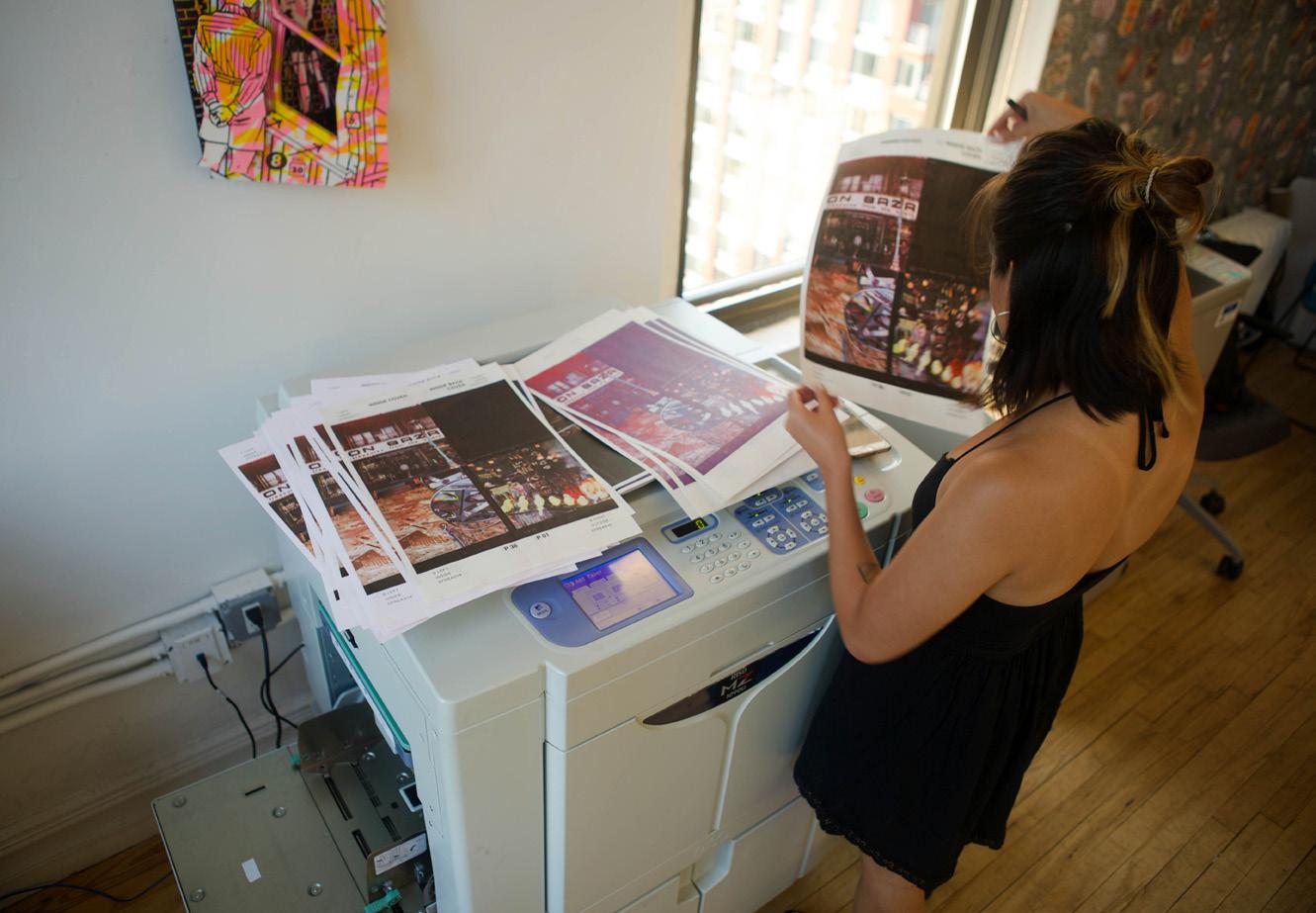


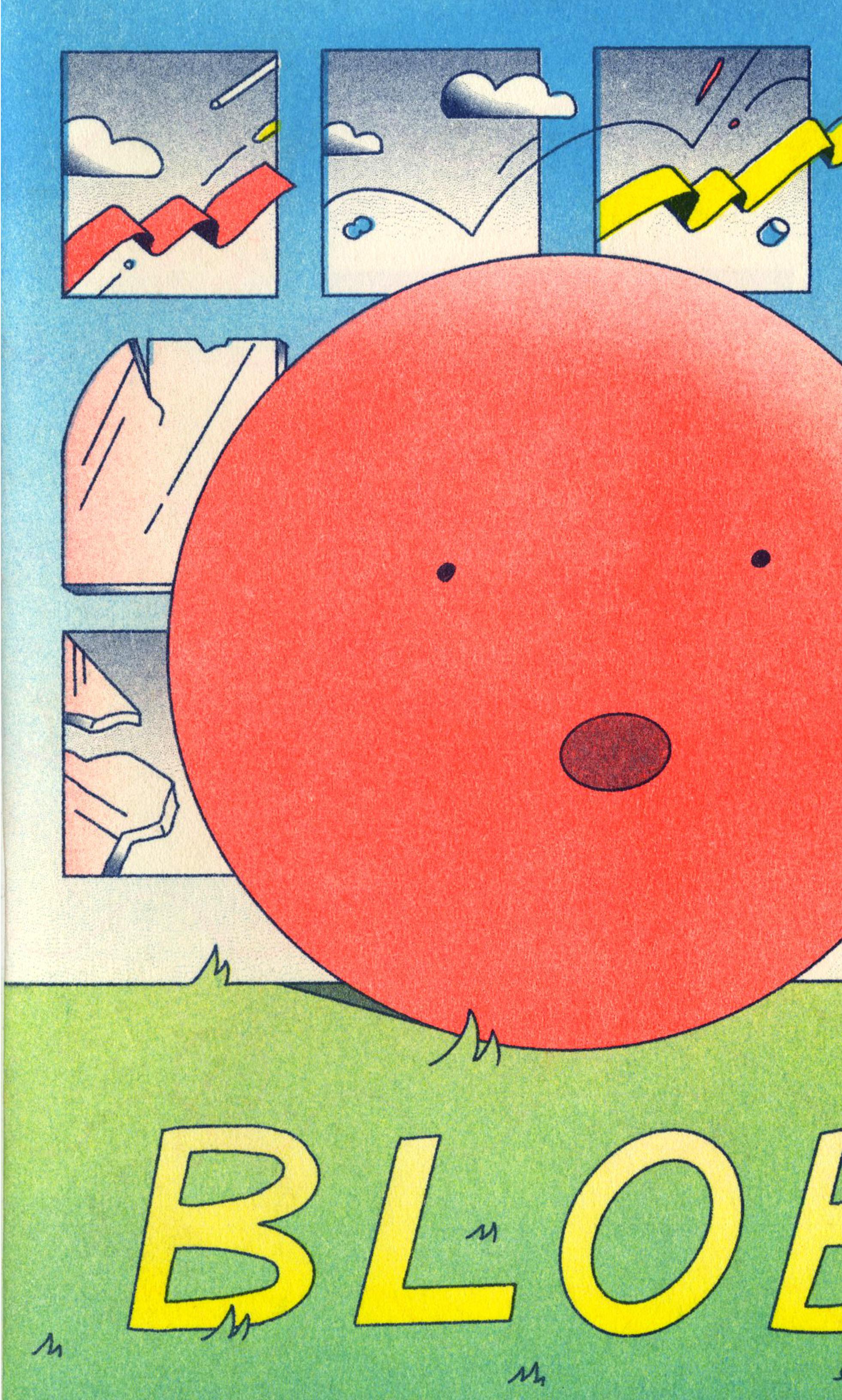


1 Sam Lee, BLOB, 2025, Risograph zine, 5 x 6 inches.
2 Gica Tam, Tiger Balm, 2019, Risograph zine, 8 x 5 inches.
3 Allison Kaufman, Big Fish I, 2017, archival pigment print, 24 x 24 inches.



4 Janine Brown, Bittersweet Thoughts, 2025, home-cooked bioplastic, calendula petals, white zinnia petals, hand-stitched with crochet thread and pearl cotton, wood panel, 15 x 15 x 1.5 inches.
5 Michael Giurato, HOW TO SKIP A ROCK, 2020, Risograph zine, 5 x 8 inches.
6 Chris Mills, Artificial Impression 16, 2023 – 2024, CMYK screen print on 125 lb. archival cover stock, 16 x 12.5 inches.
7 Marg Flatley, Such Awful Beauty, 2023, Risograph zine, 6.5 x 9 inches.
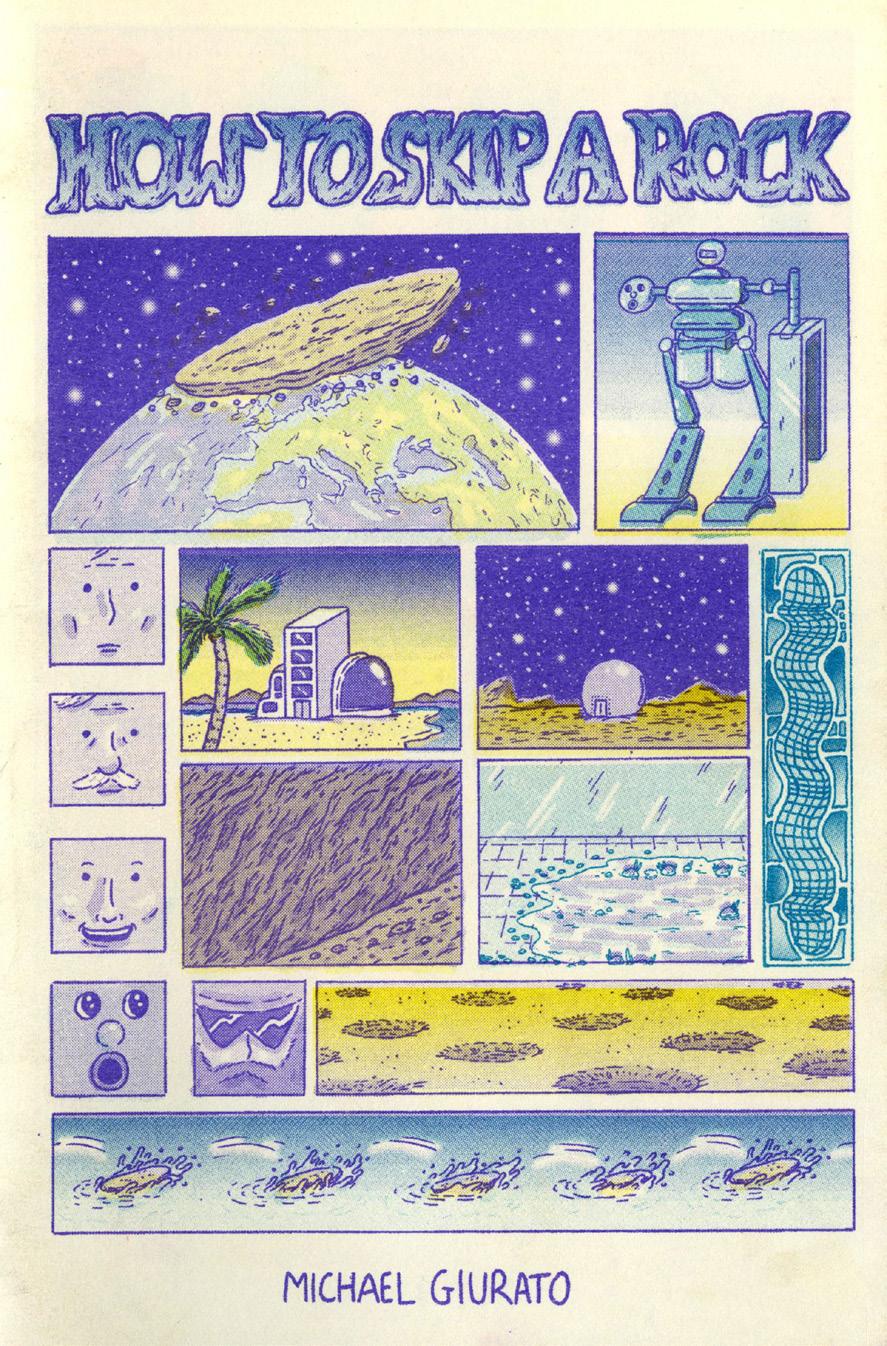
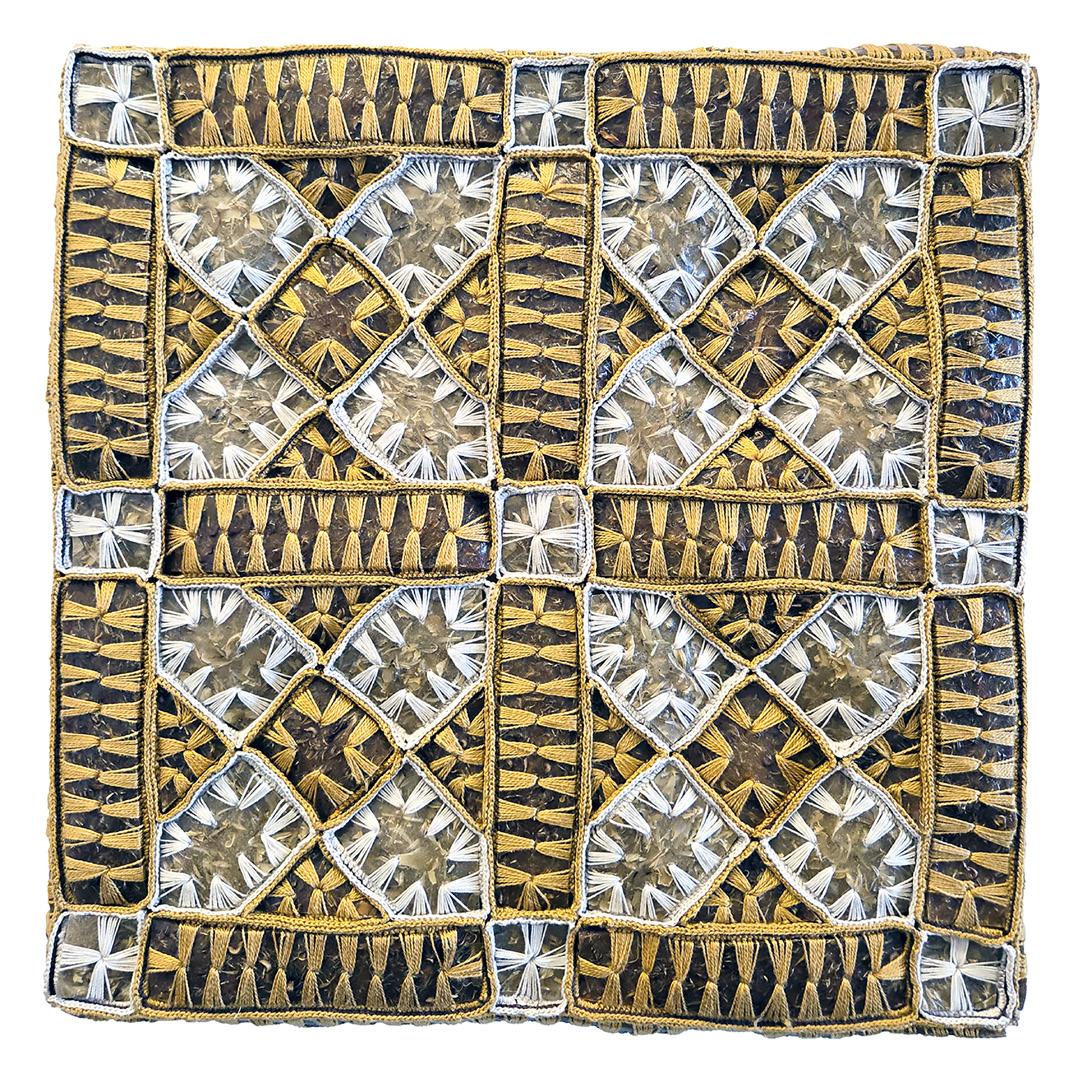


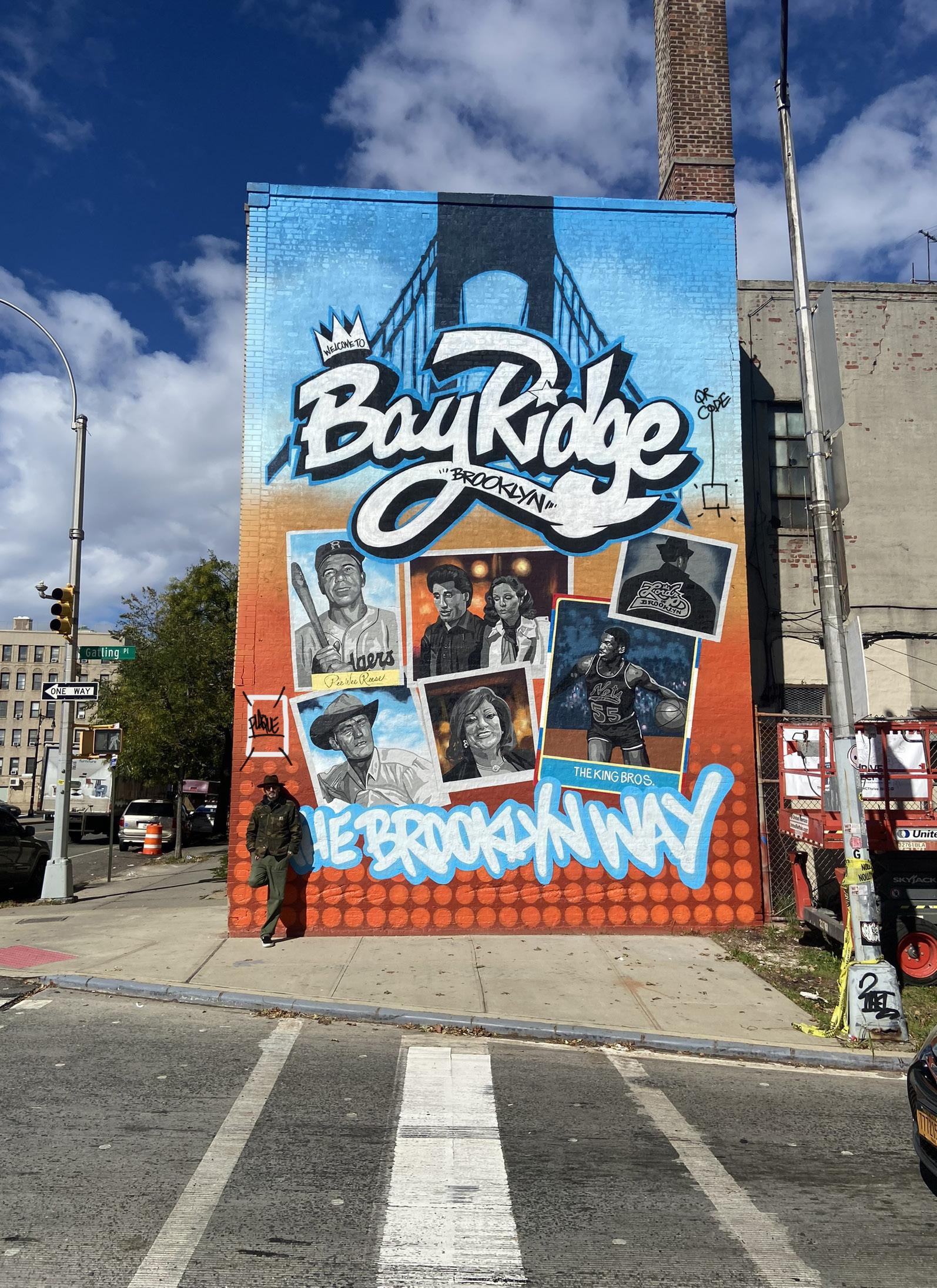
By Valerie Smaldone
THE ARTIST KNOWN AS MR. KAVES began as an 11-year-old tagging buildings and dodging police and eventually found his way to attending the School of Visual Arts. Now the massive and comprehensive exhibition, “Brooklyn Pop” currently on view in Industry City, showcases Kaves’s role as an artist and collector in the abundant popular culture of Brooklyn.
Kaves is a storyteller as much as he is an artist. With every artform he engages in—music, illustration, graffiti, writing, directing, tattooing—Kaves provides rich stories for an enchanted audience. Today, his collection of artifacts, from the decades that formulated his artistic soul, can be viewed and enjoyed at “Brooklyn Pop,” along with a monthly performance piece called A Brooklyn Dream
SVACE’s Valerie Smaldone recently had the pleasure of having a conversation with Kaves:
With all the different art forms you engage in, how do you best describe yourself? I always felt like I kept the soul of that young graffiti writer—mischievous and creative, part outlaw, part storyteller. As an artist, I don’t think you need to stick to one medium. Whether it’s painting, directing, writing, I wear the hat that gets the job done. That’s your responsibility as an artist: to serve the story. So, what do I call myself? I guess I just call myself an artist.
When you decided to go for some formal education, you chose the School of Visual Arts. How did that experience inform you as an artist?
SVA was like stepping into another world— one where my raw street instincts were suddenly validated, but also challenged. It didn’t take the street out of me, it sharpened what I already had. It taught me structure, process, and perspective but never at the cost of authenticity. That balance changed everything.
What is the benefit of being a multidisciplinary artist?
You get to stay dangerous. You don’t become dependent on one lane. When one door shuts, I break through another. Painting, music, theater, it all comes from the same place. When you move between worlds, you find unexpected connections.
Your journey in creating “Brooklyn Pop” is really a lifelong endeavor. When you started your collection, was there a notion of it being realized in this manner?
Not at all. At first, it was just instinct holding onto things I felt were important. Flyers, tags, records, photographs… All pieces of a culture I knew was being erased. Over time, I realized I wasn’t just collecting memories, I was preserving legacy. The “Brooklyn Pop” exhibit is a living love letter to where I’m from.
A Brooklyn Dream, which is an immersive piece performed monthly at the exhibition, is truly your story. There are painful moments in the piece. By bringing this to life, has it helped to heal you?
Yeah. It’s therapy I never signed up for but needed. Telling the truth, even when it hurts, gives that pain a place to live outside of you. It’s for the ones I lost. For the kid I was. For the man I’m still becoming.
For people interested in following an artist’s path, what would you like to share?
Don’t chase trends. Chase truth. Learn your craft, but never let anyone tell you how to use it. Protect your story; no one can tell it like you can. And if the door doesn’t open? Build your own damn building. ��
2 Kaves, Rooftop Legends mural, 2018.
3 Kaves, mural dedicated to mom and sister, 92nd Street and Fort Hamilton Parkway, Bay Ridge, Brooklyn.
4 BMT Line Train in Coney Island. Installation with Ghost of Fox from the immersive play A Brooklyn Dream
5 Kaves and Revs, New York City train car, 1983.
6 “Brooklyn Pop” Night Fever installation.
7 Kaves, Coney Island Art Walls mural, 2015.
8 Kaves, Brooklyn Dream, painting, 2024.








Scan here ↓
WE’RE SO EXCITED TO ANNOUNCE that the SVACE team will be repping our department at MoCCA this year. Come stop by our booth and meet the team that puts all your favorite continuing education courses together. We’ll have tons of free merchandise for you, from tote bags to the latest issue of our zine. Our team will be there to chat and answer any questions you have about taking an SVACE course.
The best part is we’re doing portfolio reviews for free! Portfolio reviews are an amazing way to not only get your work seen by industry experts but also to have their years of knowledge applied to your individual creative practice. We encourage illustrators, animators, and comic makers of any kind to sign up for a free portfolio review! Past reviewers have included renowned creatives like master comic artist Carl Potts. Potts is best known for creating the Alien Legion series for Marvel Comics as well as for his work as a longtime editor for Marvel.
If you don’t have physical copies of your artwork, no worries, a digital version is a great way to come prepared for feedback. We cannot wait to see you there! ��


The Division of Continuing Education (SVACE) aims to create educational opportunities through which alumni, artists, educators, professionals, and students engage in increasing their knowledge of, and contributions to, the arts. Our mission is to offer flexible, constantly evolving programs that are multicultural, cross-disciplinary, and global in their approach.
The purpose of continuing education is manifold, but one of its most viable goals is to expose yourself to a new and different world and to build a community there. Every day is an opportunity to learn something—and to reinvent ourselves.
facebook.com/SVACE
Instagram: @svacontinued X: @svacontinued youtube.com/@SVAContinuED sva.edu/ce




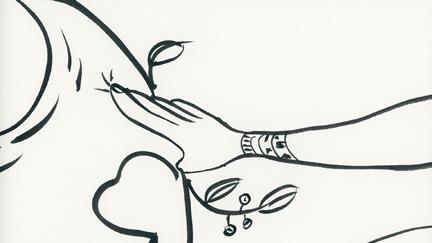



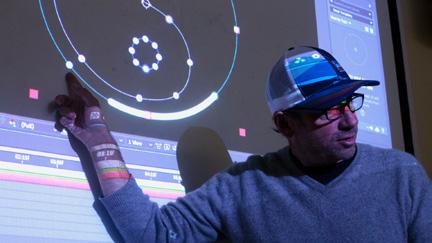







CONTINUED • WINTER/SPRING 2025
editorial staff
Joseph Cipri, editorial director
Nika Lopez, managing editor
Stephanie McGovern, editor
visual arts press, ltd.
Gail Anderson, creative director
Brian E. Smith, design director
Anthony Carhuayo, senior designer
Jennifer Liang, production manager
Laura Valenza, editor
Geordie Stevenson, design intern
Zina Zhao, design intern
contributors
Giancarlo Cipri
Catherine Guzman
Nivia Hernandez
Stephanie McGovern
Gabe Ginsburg
Valerie Smaldone
school of visual arts
David Rhodes, President

209 EAST 23RD STREET
